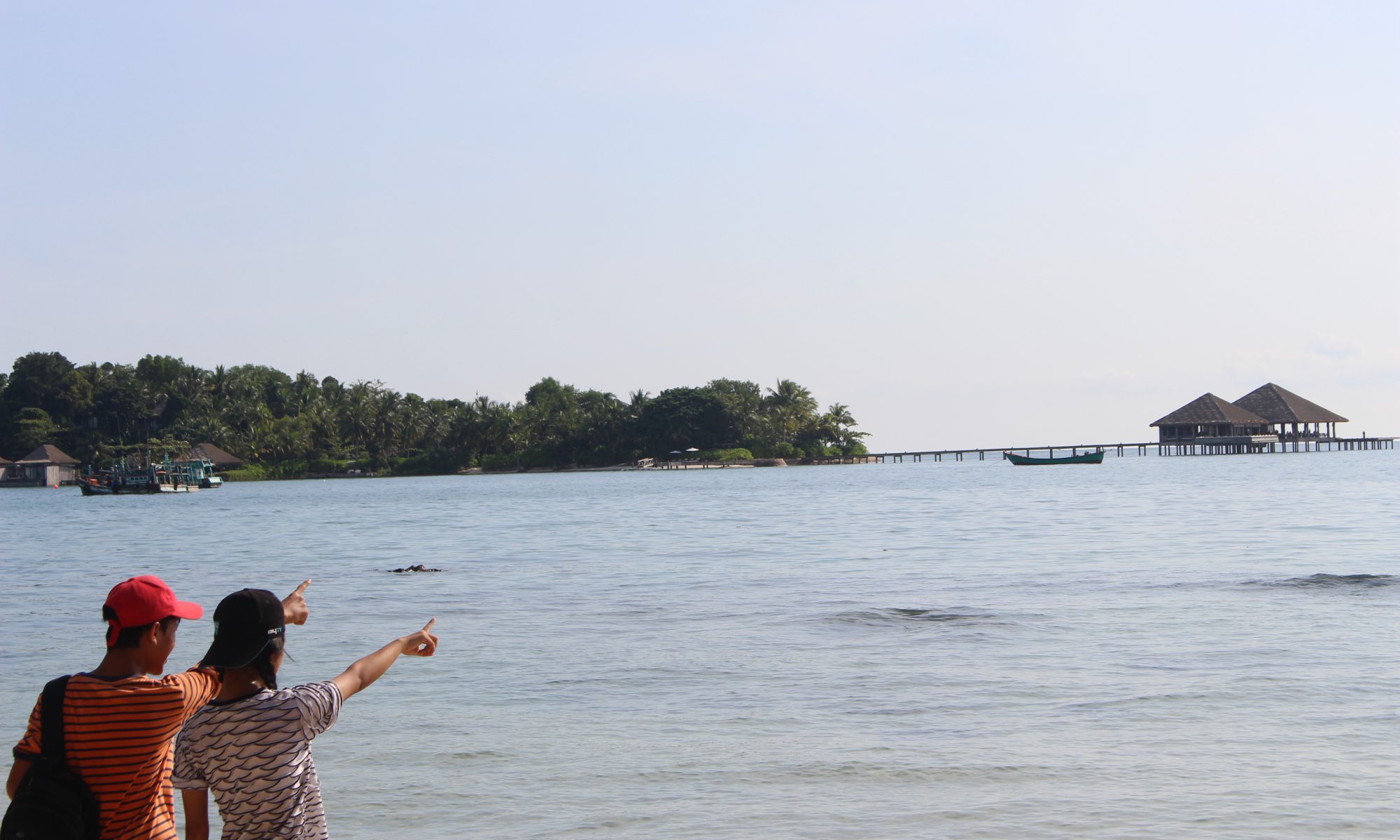Here we go! This was another long trip from the first trip we had which was closed for one week. As always, we were making a lot of accomplishment from a long stay on the island. These are the overall activities we did:
- Built the concrete blocks for the marine artificial reef
- Making a triangular cluster as another alternative for marine organisms
- Deployed the first artificial reef in the first Marine Fisheries Management Area in Cambodia (MFMA)
- Conducted baseline surveys of their study site
- Beach Clean up and rubbish creativity
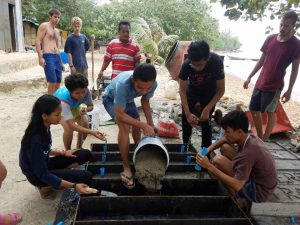
Building the concrete blocks was the start of the entire trip. We met Ricky, who was responsible for facilitating us through the entire process of the making those blocks. It was a tiring and fun task. We divided everyone into a small team with a different small task: chain team, cement team, and pebble team. All the LMRT members all began with the assembling of the concrete mold which would make six blocks at a time. Then, we went to our small teams doing the assigned task. In order to make the blocks, we mixed the cement with sand, pebbles, and water. After, we poured the mixture into the mold. We dried the blocks for about a day, but right before we took out the concrete blocks, we carved those with our names. All of these blocks will be deployed in the future an artificial reef for the marine biodiversity at Koh Seh. Simultaneously, it does have an important role in preventing an illegal fishing, trawling.
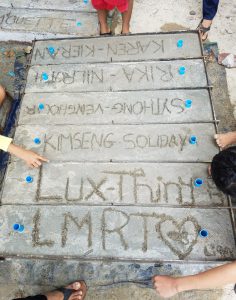
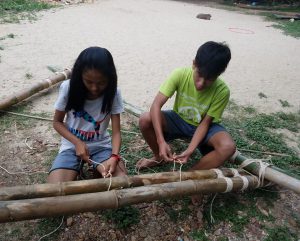
Right after finishing all the jobs with the blocks, we continued our duty to complete the make of cluster. As one of our members said, “[Cluster] is a triangular bamboo shelter with ropes dangling into the water.” This is another alternative to creating a habitat for the marine organisms besides the artificial reef (concrete blocks). We can say that cluster is a hand-made buoy; it can replace with the plastic one. Once we deployed the cluster, it will help to facilitate all the fish including the juveniles.
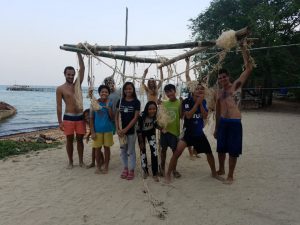
When we were done with both building projects, we are ready to deploy. This deploy is part of constructing the Marine Fisheries Management Area in Cambodia project (MFMA). MFMA is a huge project that Marine Conservation Cambodia (MCC) proposed to the government of creating a sustainable area or habitat and preventing all the illegal fishing for the Kep Archipelago. MCC chose various locations around the Archipelago to deploy the artificial reef on the GPS with the total of 47 spots. The clusters will be deployed into the ocean, used to mark the location of each plot, and connected to the deployed artificial reefs underwater. LMRT team has done a phenomenal work of helping to deploy one of the MFMA spots. Again, it is a tiring job, but we are happy and proud of everybody who involved since we are taking baby steps to change the world.
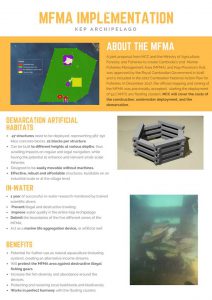
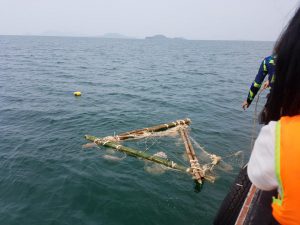
The spot we helped to deploy is our official surveying location for the LMRT team to study for the rest of the years here. We had been practicing all the three types of survey (fish, invertebrates, and substrates) since the last trip, and of course, we were ready to start this first official survey. It is a 100-meter survey with the blocks in the midway. Sadly, we missed two of our teammates because they were sick. We still had six people left, and it was perfect to divide into each survey. Soliday and I were the invertebrate teams; Sythong and Thiny were in the fish team; Kimseng and Lux were in the substrate team. As part of the survey, the fish had to go to first in the early morning to lay out the lines and start to survey because fish would be waking up and ready to find food. After, the invertebrate and substrate team go last.
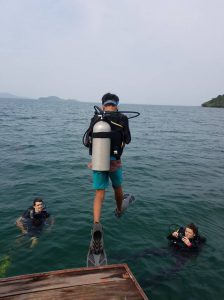
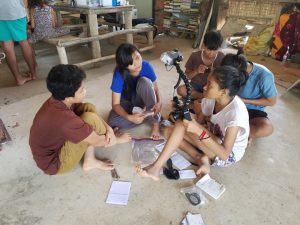
During my invertebrate survey, there was nothing found. We saw only some conch, urchins, sea stars, and sea hares. We would not expect to see many sea hares the surveying location; eventually, we decided to add sea hare as another species to our slate for the survey. The area was not sand instead silty, and there were not many fish and other organisms started to live there yet. For the entire trip, we got to survey three times for each. So, we got to have three replicates. Every night, we logged our dives and fill the data from the slates. As looking through the data, we are hopeful to see more organisms starting to live and the improvement of our benthic zone. In addition, we named our location as “Karen’s Reef.” We named to show our gratitude to Karen.
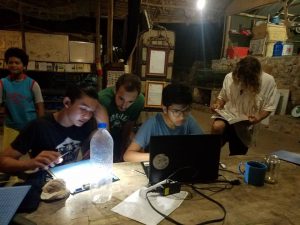
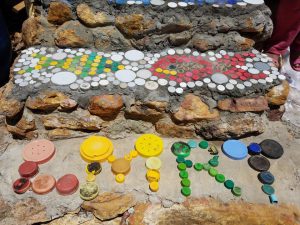
I would say it was one of my best trip here at the Koh Seh since I am very excited to see more lives at our Karen’s Reef. We did a lot of help our ocean and we are going to accomplish more. After participating in these small activities to save our ocean, it is very emotional for me somehow because I cannot imagine myself and others doing all of these to serve the ocean, our home. If you want to comprehend more about the MFMA, please click this link below.
https://www.facebook.com/volunteer.marine.conservation.cambodia/
